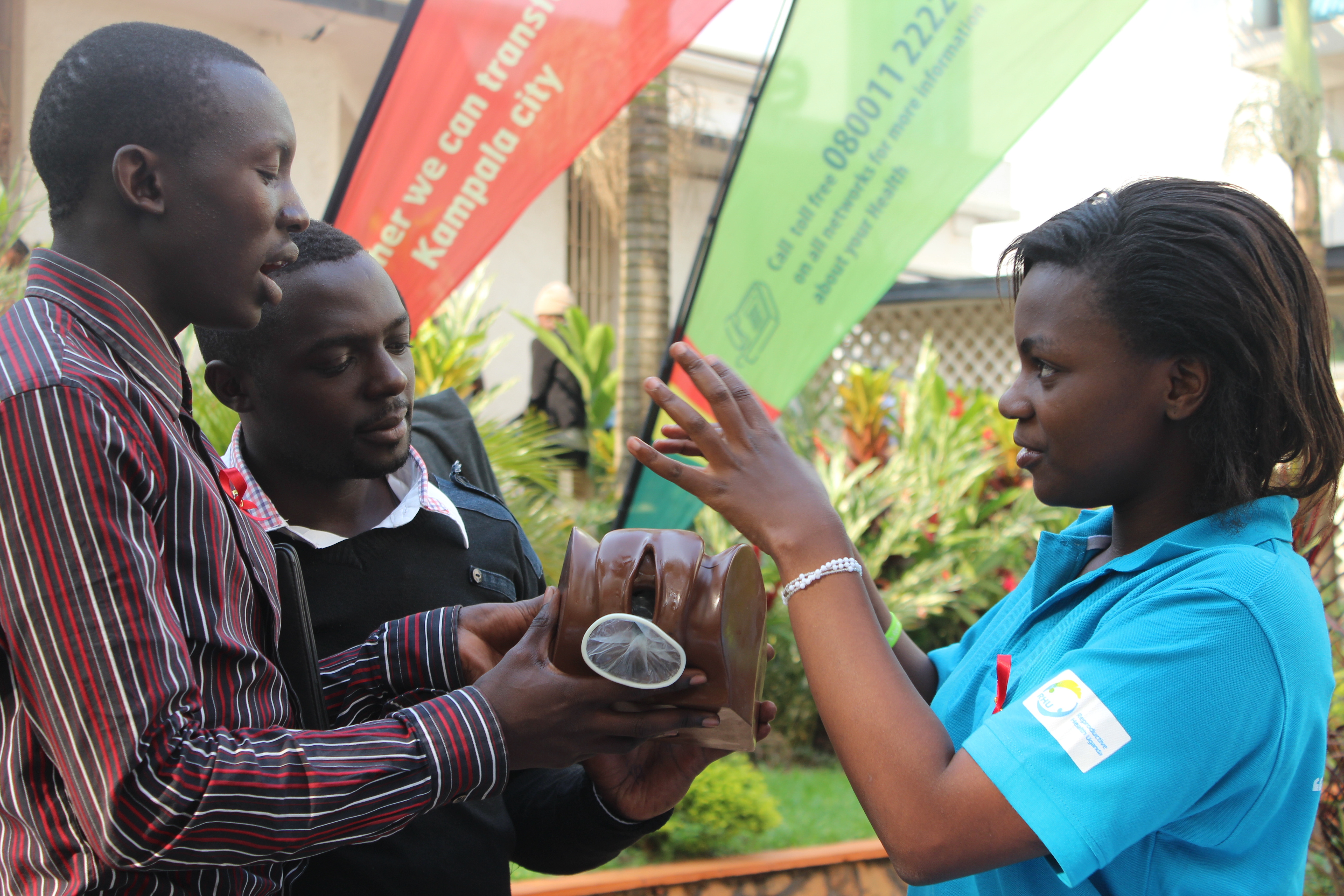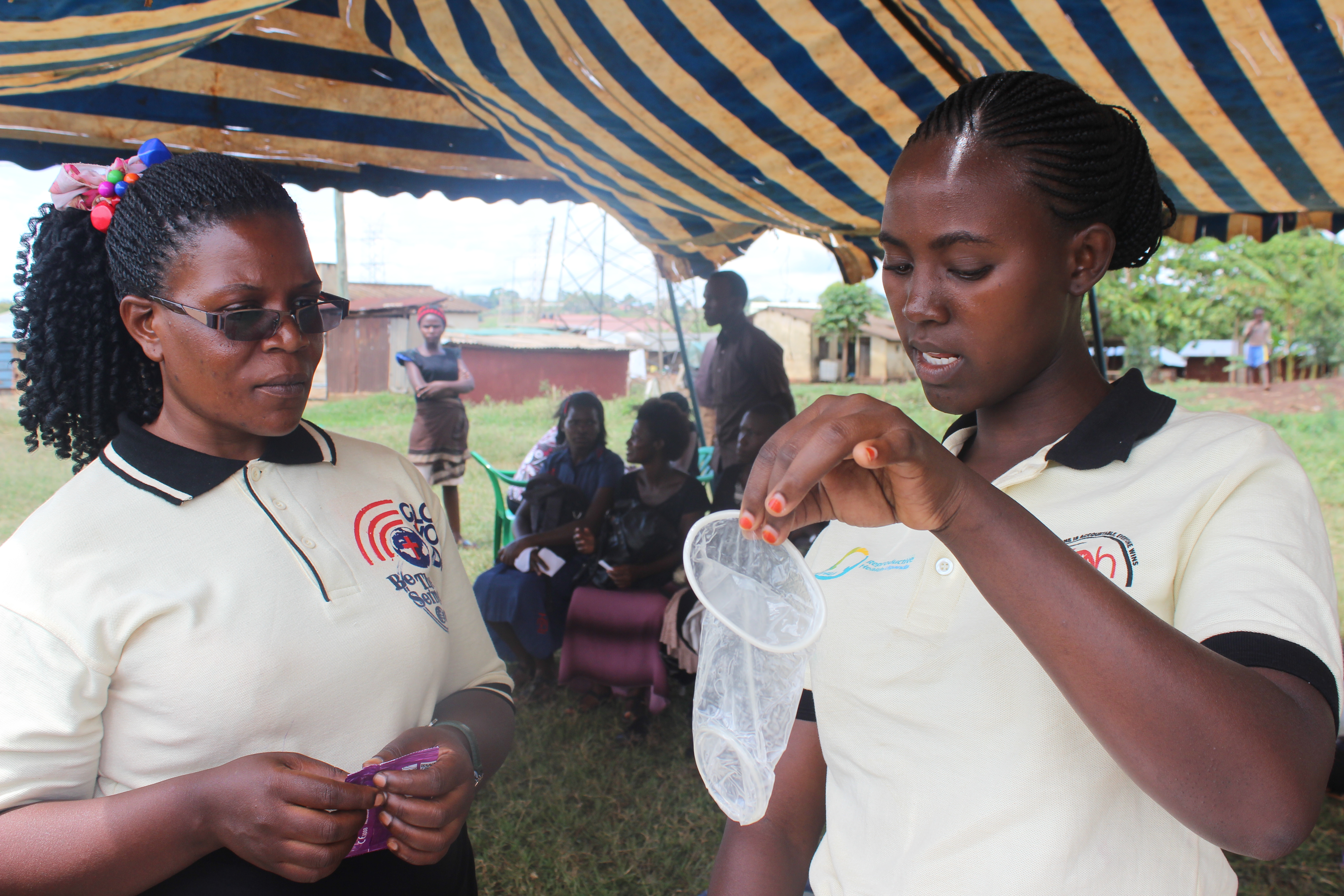Female condoms are not about your personal opinion
They are about protection, choice, and saving lives
As the manufacturer of the FC2 female condom, we are used to a wide array of reactions to the product we make. As a rights-based product made for women and girls, about sex and sexuality, which has only been around for the past 20 years, it is not entirely unexpected that one of the many reactions we get is one of skepticism. But let us be very clear; this skepticism does not come from the (potential) users themselves. In our many meetings with multilateral donors and ministries of health around the world, we find that it is actually some of the key decision makers who scoff when we talk about the female condom. Whereas in our training sessions, conference- and field visits, the women and girls who would potentially use the female condom - as well as their male partners - show enthusiasm, curiosity, and an openness to learn about a product that could provide them with protection and a sense of control.
Bias leads to marginalization
The skeptic reactions we sometimes get from key decision makers have varying reasons. Sometimes it is unfamiliarity with the product, or being uncomfortable with the idea that women can take charge of their own protection (often assumed a man’s job), but most of the time, it is bias. This negative tone of voice can limit women’s ability to access a product that can help her space her pregnancies and prevent her from falling ill. Female condoms are not about your personal preference or opinion; they are about saving lives, and they are about providing women and girls around the world with an additional option to protect themselves against STIs, including HIV and Zika, as well as unplanned pregnancies.
As demonstrated by research, acceptability of the female condom is problematic mainly at the provider and international policy level. As stated by Weeks et al. (2010): “One of the greatest continuing barriers to FC uptake results from negative provider reactions to it and their own lack of familiarity or comfort with explaining its proper use”, and Peters et al. (2012): “Female condom programs have been sabotaged by problematizing acceptability among users and by stakeholders failing to create access that would satisfy and increase demand. All stakeholders contribute in different degrees to the marginalization of the female condom, except women users themselves and some women activists”.
We might add to this: writing and publishing on the female condom in a condemning, biased, overtly negative, even sensationalist manner, adds to this marginalization in the same way. Which is what we found to be the case in the recent article published in the Guardian; ‘‘Uncomfortable and Disgusting’: Uganda’s 1.2 unwanted condoms’, by Samuel Okiror (August 8, 2017).
Faulty claims on the female condom
Okiror makes several faulty claims, some of which we would like to address here.
‘If not addressed, the issue of low utilisation of female condoms is likely to contribute to new HIV infections among young women in Uganda, more cases of other STIs among female sex workers and unwanted pregnancies.’ - This would only be the case if female condoms were the only product a certain group would want to use and they wouldn’t have access to it. This sentence implies there is no other product available and the female condom takes up unnecessary space where other products could be provided.
‘Women who have used condoms complain they are hard to use and uncomfortable. They can also be expensive if bought privately.’ - Interesting, because the female condom is not for sale in Uganda. It gets distributed for free, as it is purchased by multilateral donors such as UNFPA (as Okiror himself states in his piece). Which women are complaining? Similarly, Okiror cites research conducted this year (without a source) that found a 2% demand for female condoms, without a source.
Misconceptions about the female condom are abound. But so are decent scientific publications. Previous research demonstrates that acceptability for female condoms is as high as 65%. Researchers state that “A preponderance of studies shows that short-term acceptability of the FC is high among diverse groups of women and men in many settings, with the proportion trying the method ranging from 37% to 96%” (Exner et al., 2012). Similarly, researchers in ‘The female condom: the international denial of a strong potential’ (Peters et al., 2010) argue that in a 1997 review by WHO of more than 40 acceptability studies of the female condom, from over 40 different countries around the world, 37% to 96% of female condom users rated the product as positive and acceptable.
Stories should be told
Research is there to counter faulty or sensationalist claims as made in the article by Okiror. However, we also want to applaud Okiror for highlighting the other aspects and telling personal stories, some of them depicting a grim reality.
‘Female condoms offer women protection against HIV and other STIs, as well as pregnancy. They are one method among a range of contraceptives available in Uganda, the most popular of which are long-term injectables and implants.’ - This illustrates the importance of having accessibility to a method mix, ensuring that people can CHOOSE the method most suitable for them. Several long-term studies suggest that promoting the female condom in addition to the male condom can increase the overall number of protected intercourse occasions overall (Exner et al., 2012). The female condom is not meant to replace the male condom, it is in addition.
The three sex workers Samuel Okiror quotes mainly demonstrate that there are misconceptions about the female condom; it does not have to be held in place during sex, for example. That is why training and education is so important. The sex workers that are quoted reflect a very sad reality that provides no argument for low uptake of female condoms, but for low uptake of barrier methods in general: they choose not to use any protection in order to earn more money. They opt for the risk to get sick, possibly terminally ill, in order to earn money (and survive in the short-term).
The stories of the harsh realities of sex workers in Uganda confirm the importance for organizations, the ministry of health, and donor agencies to work together to improve information provided on contraceptives that prevent STIs and HIV, like the male and female condom. For female sex workers in particular it is of crucial importance that they can protect themselves, not depending on a client to have an erection before a barrier method can be put on/in. We know some female sex workers get creative and ask their clients for extra money when using a female condom!
A different story of the female condom
What story do you choose to tell? What quotes do you choose to single out? Our story is one of partner organizations that tell us people are begging for more supply of female condoms. They tell us female sex workers in Uganda are re-washing their female condoms, as the supply is not sufficient. Over the past five years, champion multilateral donors UNFPA and USAID have invested in female condoms and thereby provided an invaluable contribution to family planning and HIV prevention efforts around the globe. But key populations still do not get sufficient supply of (male and) female condoms, because procurement agencies like the beforementioned struggle with huge funding gaps, something the Global Gag Rule has only exacerbated.
Female condoms are more than just another product. They are an empowerment tool. They are an indispensable product for girls and women to have access to so they can protect themselves and their partners to live safer, healthier, empowered lives. We hope the tone of voice in which journalists, decision makers, and providers talk about the female condom will be one that is rights-based; because all women and girls should have a choice.
--------------------------------------------------------------------------------------------------------------
About the Female Health Company/the FC2 Female Condom
The female condom is still the only available dual contraceptive product available in the world that is under the control of women. The Female Health Company, manufacturer of the FC2 Female Condom, has shipped the female condom to over 144 countries worldwide. Based on the procurement quantity of the purchasing country, the company provides accompanying technical support free of charge and runs training- and education programs in support of female condom distribution, uptake and acceptability, working closely with governments, INGOs, NGOs, CBOs, universities, and municipal HIV prevention or family programs.




Leave A Comment